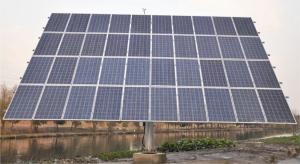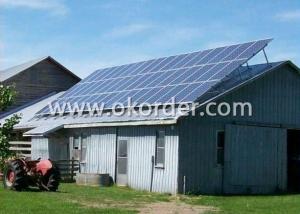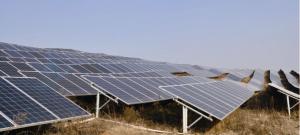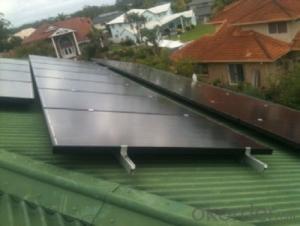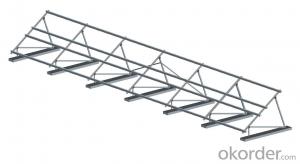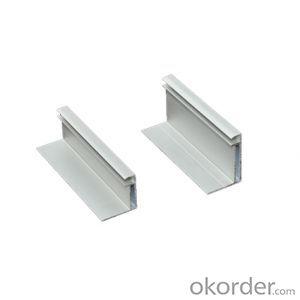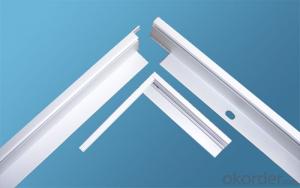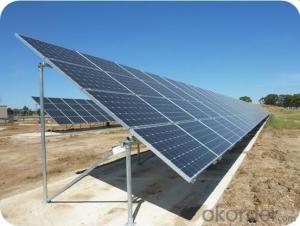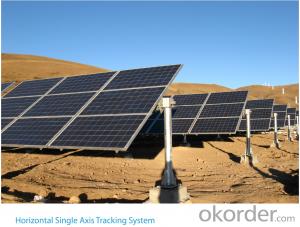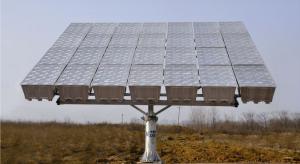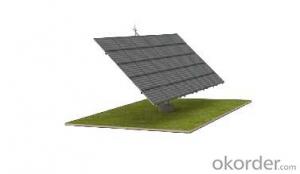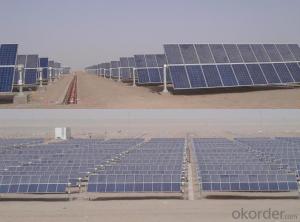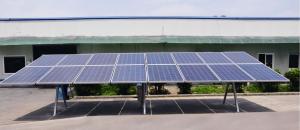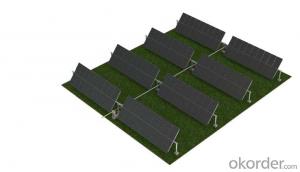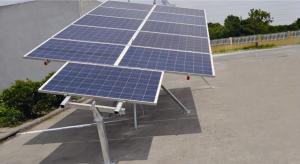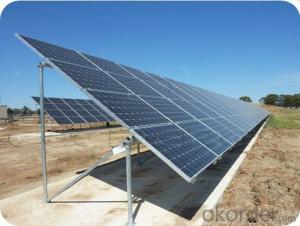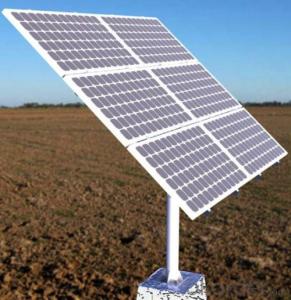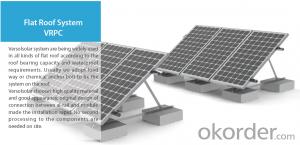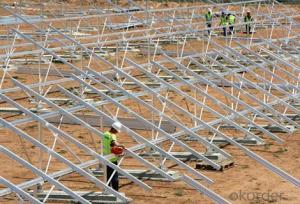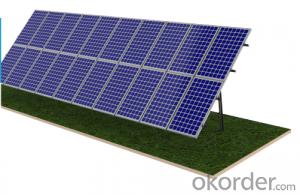S-Rack Solar Mounting Systems for Polycrystalline Dual-Axis Tracking
- Loading Port:
- Shanghai
- Payment Terms:
- TT OR LC
- Min Order Qty:
- 100000 watt
- Supply Capability:
- 5000000 watt/month
OKorder Service Pledge
OKorder Financial Service
You Might Also Like
Products introduction:
Polycrystalline dual-axis tracking system is high-tech petented product.
Y-axis adopt eccentric driving.power generating can be increased more then 40%.
The tracker bracket adopt hot-dipped galvanizde high-quality structual steel Q235B,system stability is very high and maintenance cost is very low,working time more than 25years.
Features:
1. The system, which uses an isosceles triangle bracket as bracket structure and maintenance-free, wind and sand-proof high polymer material bearing moving parts and unique linkage structure, features reliable system stability, low cost and low failure rates.
2. Compared with traditional fixed-bracket its annual energy output can be increased up to approximately 20 percent - 30 percent.
3. With exactly the same or even lower cost as fixed-bracket the system is the optimal choice for the establishment of large and medium-sized high-efficiency solar power stations.
Specification:
• Installed capacity | • 2KW—20KW |
• control method | • light control • time control • light/time control |
• Tracking accuracy | • ≤0.1° |
• Track elevation | • 0—75° |
• Tracking azimuth | • 245° |
• The safe operation of wind speed • | • 75km/h |
• Maximum wind resistance | • 150km/h |
• Drive type | • Rotary gear drive |
• Driving motor power | • DC24V/30W—100W |
• Structural materials | • Q235 Hot dip galvanized steel |
• Protection grade • | • I P 6 5 |
• Service / warranty • | • 25Y/2Y |
• Working environment temperature | • -35℃—65℃ |
• Net area | • 10㎡—120㎡ |
•The weight of the system | • 500kg—3000kg |
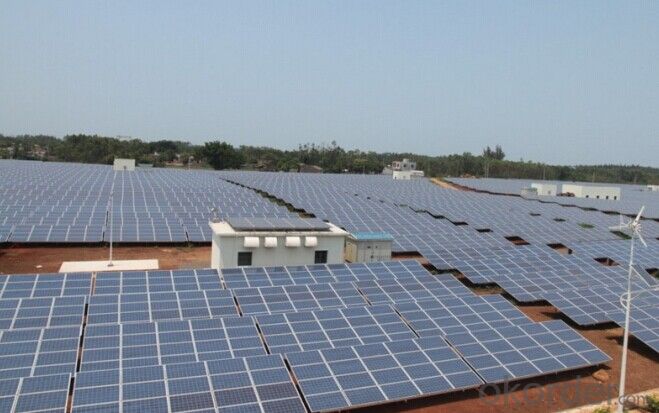
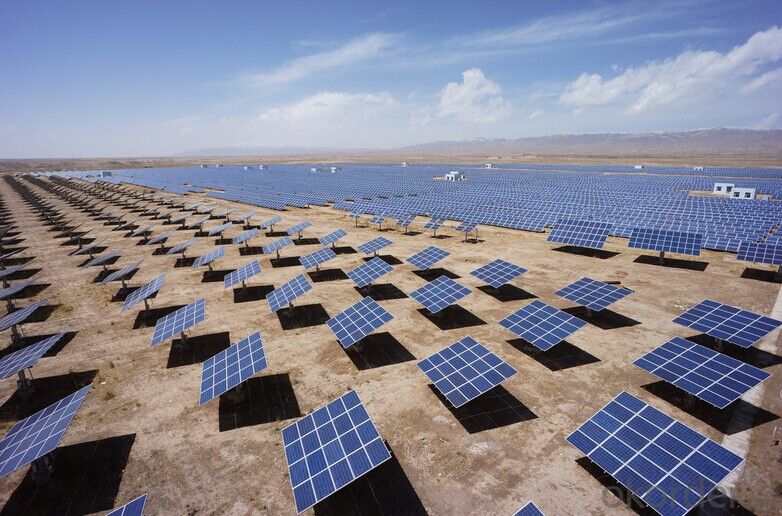
- Q: Can a solar mounting system be used for solar-powered pumps or irrigation systems?
- Yes, a solar mounting system can be used for solar-powered pumps or irrigation systems. Solar mounting systems provide a secure and stable platform to install solar panels, which can generate the needed electricity to power pumps or irrigation systems. This allows for a sustainable and environmentally friendly solution for powering these systems.
- Q: What are the advantages of using a roof-mounted solar system?
- There are several advantages of using a roof-mounted solar system. Firstly, it maximizes the use of available space, as roofs usually have ample sunlight exposure. This means that more solar panels can be installed, generating higher electricity output. Secondly, roof-mounted solar systems are typically easier to install and maintain compared to ground-mounted systems. They require less land space and are less susceptible to shading issues. Additionally, roof-mounted systems are more discreet, blending seamlessly into the existing architecture of a building. Finally, by using a roof-mounted solar system, homeowners can take advantage of net metering, which allows them to sell excess electricity back to the grid, further reducing their energy bills and potentially earning credits.
- Q: Are there any specific requirements for installing solar mounting systems in high-temperature regions?
- Yes, there are specific requirements for installing solar mounting systems in high-temperature regions. These include selecting materials that can withstand high temperatures, ensuring proper ventilation and airflow around the panels to prevent overheating, and designing the mounting system to accommodate thermal expansion and contraction. Additionally, it is important to consider the impact of high temperatures on the performance and efficiency of the solar panels.
- Q: What is the expected energy generation over the lifetime of a solar mounting system?
- The expected energy generation over the lifetime of a solar mounting system can vary depending on various factors such as the location, the type and efficiency of the solar panels, the tilt and orientation of the system, and the climatic conditions. However, on average, a well-designed and properly maintained solar mounting system can generate approximately 10 to 25 times the initial energy required to manufacture and install the system.
- Q: What is the expected increase in energy resiliency with a solar mounting system?
- The expected increase in energy resiliency with a solar mounting system can vary depending on various factors such as the size of the system, location, and local weather conditions. However, generally speaking, a solar mounting system can significantly increase energy resiliency by providing a reliable and sustainable source of electricity. With solar panels installed on a mounting system, users can generate their own electricity, reducing dependency on the grid and minimizing the impact of power outages. Additionally, solar energy is renewable and abundant, ensuring a continuous power supply even during natural disasters or emergencies. Overall, a solar mounting system can greatly enhance energy resiliency by offering a reliable and independent energy source.
- Q: Are there any specific requirements for buoyancy when using a solar mounting system for floating solar?
- Yes, there are specific requirements for buoyancy when using a solar mounting system for floating solar. The mounting system needs to be designed in a way that it provides sufficient buoyancy to support the weight of the solar panels and other associated equipment, while also ensuring stability and preventing any tilting or sinking. Additionally, the buoyancy requirements may vary depending on factors such as the size and weight of the solar panels, water conditions, and the specific location of the floating solar installation.
- Q: Can a solar mounting system be used for solar pergolas or shade structures?
- Yes, a solar mounting system can be used for solar pergolas or shade structures. These systems are designed to securely hold solar panels in place, and they can be adapted to fit various structures, including pergolas or shade structures. By incorporating solar panels into these structures, you can generate clean energy while providing shade or covering for outdoor spaces.
- Q: Are there any government incentives or rebates available for solar mounting system installations?
- Yes, there are government incentives and rebates available for solar mounting system installations in many countries. These incentives vary by region and government policies, but they often include tax credits, grants, and rebates to encourage the adoption of solar energy and reduce the cost of installation. It is recommended to check with local government agencies or consult with a solar installer to understand the specific incentives available in your area.
- Q: Can a solar mounting system be installed on a swimming pool or aquatic center?
- Yes, a solar mounting system can be installed on a swimming pool or aquatic center. These systems are designed to be versatile and can be installed on various surfaces, including rooftops, ground-mounted structures, and even floating platforms on water bodies such as pools. It allows for efficient utilization of space and helps generate clean energy to power the facility or supplement its energy needs.
- Q: Can a solar mounting system be used in areas with limited access to solar blogs?
- Yes, a solar mounting system can still be used in areas with limited access to solar energy. While the availability of solar energy might be limited, the mounting system itself can still be installed in such areas. However, it is important to consider the amount of sunlight available in these areas before deciding on the size and capacity of the solar system.
Send your message to us
S-Rack Solar Mounting Systems for Polycrystalline Dual-Axis Tracking
- Loading Port:
- Shanghai
- Payment Terms:
- TT OR LC
- Min Order Qty:
- 100000 watt
- Supply Capability:
- 5000000 watt/month
OKorder Service Pledge
OKorder Financial Service
Similar products
Hot products
Hot Searches
Related keywords
